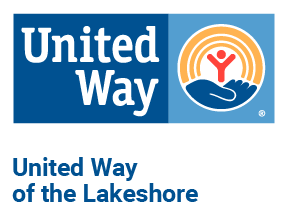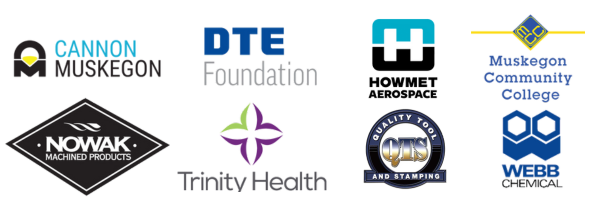
United For ALICE data show that more than 40% of American households do not earn enough to cover basic expenses, including housing, child care, food, transportation, health care, and a basic smartphone plan. This is a structural economic problem; wages are not keeping pace with increases in the cost of living. But for Black households, those numbers are far higher. Our analysis of the real cost of living in every U.S. county shows that 60% of Black households are unable to afford basic household essentials in their communities. This is three times the rate of hardship shown for Black households by the antiquated and arbitrary Federal Poverty Level (FPL). And it is nearly double the rate of hardship for White households.
KNOW THE FACTS
United For ALICE will continue to provide the data needed to recognize and upend racial barriers to financial stability and reform institutional bias. The coronavirus pandemic has thrown our broad, systemic failures of economic and racial justice into even sharper relief; going back to pre-COVID-19 norms will not produce a sustainable or growing economy. By more accurately identifying need, the ALICE measures can guide better policies and practices to help families and communities thrive. We know that:
- Racial and ethnic disparities in hardship are growing, not shrinking. From 2010 to 2018 — which covers the “recovery” from the Great Recession — the number of Black households below the ALICE Threshold (the minimum income needed to afford household basics) increased by 12%, while the number of White households struggling to make ends meet barely changed, increasing only 2%.
- Black families continue to have persistently lower wages, fewer educational and job opportunities, poorer health, and lower life expectancy. Structural racism and discrimination continue to restrict job opportunities and wage levels for Black workers. Even when controlling for age, gender, education, and region, Black workers are paid 16% less than White workers (up from 10% in 2000).i This disparity directly impacts quality of life for Black households and communities. Black families remain disproportionately likely to live in substandard housing in neighborhoods of concentrated poverty — those with few grocery stores, banks, parks, or recreation facilities, with inadequate health care and under-resourced public schools, and with high levels of violence and exposure to environmental hazards.
- Black households continue to be less able to accumulate and pass on wealth. Like disparities in income disparities in wealth and assets persist for Black households. Unable to save, many Black families do not have the means to build assets, let alone catch up to those who have been building assets for generations. The discrimination that these families face in areas from hiring to housing to lending, when compounded, creates an even bigger wealth gap.
- Black households are at greater risk from COVID-19. Black people are contracting COVID-19 at higher rates and dying at higher rates than their White counterparts. These disparities are being fed by multiple factors — including more Black workers in “essential” jobs that require on-site, frontline presence with a higher risk of exposure, and historically poorer access to quality health care for Black communities.
ABOUT UNITED FOR ALICE
Who is ALICE?
ALICE (Asset Limited, Income Constrained, Employed) households have income above the FPL but below the ALICE Threshold — the income needed to afford the most basic household budget. ALICE households earn too much to qualify as “poor” but are still unable to make ends meet. They often work as cashiers, nursing assistants, office clerks, servers, laborers, and security guards. These types of jobs are vital to keeping our economy running smoothly, but they do not provide adequate wages to cover the basics of housing, child care, food, transportation, health care, and technology for these ALICE workers and their families. Together with households in poverty, ALICE households represent just over 40% of all households in the U.S.
What is the ALICE Threshold?
The ALICE (Asset Limited, Income Constrained, Employed) Threshold is the minimum income that households need to afford all of their basic needs. It is calculated using actual costs of essential goods and services — housing, child care, food, transportation, health care, and basic technology — in every U.S. county and is adjusted for household composition. This creates a far more accurate picture of needs than the outdated FPL.
Where can I find the data and more information?
To better inform the current crisis on race in the United States, United For ALICE is providing a preview of data from our 2020 ALICE Report for the United States. Throughout the year, United for ALICE will release in-depth reports for ALICE partner states, followed by the release of the national data set at the end of the year. For more details, visit the United For Alice website: www.UnitedForALICE.org. For a detailed overview of the ALICE methodology, visit www.UnitedForALICE.org/Methodology.
What is the mission of United For ALICE?
United For ALICE is a center of innovation founded by United Way of Northern New Jersey that is shining a light on the challenges ALICE (Asset Limited, Income Constrained, Employed) households face. Through a standardized methodology that assesses the cost of living in every county, the project provides a comprehensive measure of financial hardship across the U.S. Equipped with this data, ALICE partners convene, advocate, and innovate in their local communities to highlight the issues faced by ALICE households and to generate solutions that promote financial stability. This grassroots movement represents United Ways, corporations, nonprofits, and foundations in Arkansas, Connecticut, Florida, Hawai‘i, Idaho, Illinois, Indiana, Iowa, Louisiana, Maryland, Michigan, New Jersey, New York, Ohio, Oregon, Pennsylvania, Tennessee, Texas, Virginia, Washington, and Wisconsin; we are United For ALICE.

